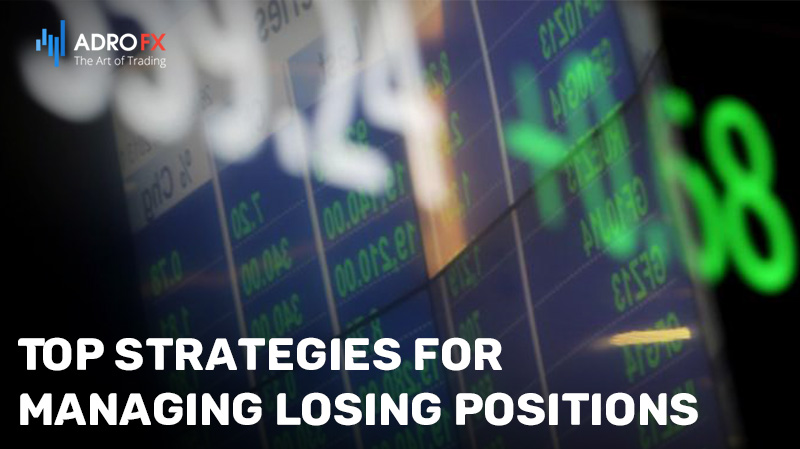Holding Losing Trades in Forex

As in any other business, trading in financial markets often involves losses. And the first task of a trader is to learn to control these costs, making sure that returns are steadily greater than losses. To achieve this goal, the approach of limiting or holding losing positions is used. Let us find out which one is better and how to use them.
Manage Your Losses
Losses in forex occur regularly. It is related to the fact that the price has not moved in the specified direction, due to which the trade has not even reached the breakeven zone. For example, a trader has opened a BUY order expecting the asset to rise in price in the next hour/day/week. However, the price chart has turned around and gone down. This is a normal phenomenon, and one should know how to work with it. It should be understood that losses on the forex market are inevitable, but they can and should be minimized.
There are two basic approaches to this:
- Limiting losses;
- Holding losses.
Limiting Losses
The first approach is associated with the use of a classic Stop Loss order, which automatically closes losing trades when the price reaches a certain level. The essence of this tactic is very simple:
The trader places an order, e.g., BUY, expecting the price to rise.
A Stop Loss is set 20 pips lower than the current level.
The price reverses, goes down, and reaches the Stop Loss level.
After that, the trade is closed with a loss of -20 points.
The Stop Loss allows defining in advance the maximum permissible level of loss. It plays an important psychological role: even if the market reverses unpredictably, the losses will be minimal, i.e. significantly limited.
The principle of determining the Stop Loss level depends on the capital management system. One of the classic rules says: maximal loss tolerance shall not exceed 3% of the current deposit amount. For beginners, it is better to take a smaller value of 2%. That is, if we take the example above, then a loss of 20 pips in terms of funds will be equal to 2-3% of the deposit.
Managing Losing Positions
The second approach is that the trader does not use a Stop Loss or sets it too far away from the entry price, and in the case of triggering a loss of more than 15% of the deposit is fixed.
That is, if the market has gone in the opposite direction, the trader waits patiently for the price to pass the "extra" distance and reverse to go in the "right" direction. It turns out that the trader holds a losing position, hoping that the market will soon change and the price will go in the right direction.
Top Strategies for Managing Losing Positions

The essence of holding losing trades always comes down to a more or less long wait for the market to reverse and the price to move in the direction trader expects. At the same time, Stop Loss may be used or not used at all. Depending on it 4 strategies for managing losing positions are distinguished.
Large Stop Loss and Small Take Profit
In this case, a trader deliberately places a large Stop Loss (for example, 15 points of the current price) and a small Take Profit (5 points), i.e. the ratio between them can be 3:1 or more. The calculation is based on the fact that it is more possible for the price to get to the nearest level because it is "easier" to pass 5 points than to pass 15 or more.
Such an approach is more often used in scalping - a trading strategy based on getting a small gains (just a few pips) by opening a big number of positions. And if there are at least three times more beneficial trades than loss-making ones, the strategy will really work. But one should realize that such a ratio is risky enough and one should apply it only after careful testing.
Trading Without Stop Loss
In this case, the Stop Loss is not set at all. The user simply opens a position and waits for the price to move in the predicted direction. The calculation is based on the fact that sooner or later the price will go "where it is supposed to go". And even if it does not happen, the loss can be fixed manually, i.e. just close the order.
The disadvantages of this strategy are obvious:
- The position can stay open for weeks/months;
- Losses are often disproportionate to returns from other trades opened by the same or another strategy;
- In the case of a deep drawdown, it is necessary to top up the deposit;
- There is a real risk of losing the entire deposit.
The described strategy is the riskiest because it often results in a 100% loss of the deposit. Experienced traders always use Stop Loss as it is dangerous to trade without it.
Martingale Method
The Martingale method also does not presuppose setting a Stop Loss. But in contrast to the simple holding method, an aggressive method of getting out of losses is used here. If the price moves in an unsuccessful direction, the position is averaged by placing new orders in the same direction, but with a larger volume.
The meaning of this method is that by increasing the total volume of positions, the price does not need to return to the first order. And a slight correction of price in the direction of returns is enough to close the whole order network in the positive.
Obviously, there is a downside to this method. Every new order increases the account drawdown and if the trend is irreversible, you can fail to wait for this correction and lose the whole deposit.
Locking Trades
This strategy is similar to the Martingale method, but in this case, the sequence of actions is reversed:
- The trader opens a position without a Stop Loss;
- The price moves against the forecast;
- Then the trader opens a second order but in the opposite direction.
- If the price goes in the "second" trend - the first position is closed manually, and the second position is left open.
If the price goes in the "first" direction - the second is closed and the first is left.
In this approach, it is not enough just to lock the position, you must have a clear plan of how to exit this position with a favorable result.
Should You Hold Losing Positions?

Intuitively, this strategy (if it can be called such) is a fairly primitive approach to trading, which is not related to:
- Market analysis;
- Indicator data;
- Capital management and other calculations.
Expecting the price reversal in the "right" direction, the trader is rather driven by the motive of greed, gambling, the expectation of luck, etc. Therefore, such tactics are connected exactly with psychological peculiarities and emotions and not with mathematical calculations and the logic of the market itself.
The main danger of waiting too long is connected with the fact that this approach can lead to a total and rapid loss of the entire deposit. This is exactly the way we usually see it, especially for beginners. In addition, simply entering the market without setting a Stop Loss with the hope of "easy" gains leads to the fact that trader stops thinking and really analyzing the situation. Sooner or later it will lead to substantial losses even if initially one managed to gain good yiled.
Thus, holding losing trades will do neither for experienced traders nor beginners. It is too risky and, at the same time, a primitive approach, which can lead to the loss of the deposit and prevent you from analyzing the market and learning to trade professionally.
But to be fair, it is worth noting that there are quite successful strategies, based on the method of Martingale and Locking orders. But it should be understood that these strategies use well-thought-out tactics and apply low aggressiveness.
About AdroFx
Established in 2018, AdroFx is known for its high technology and its ability to deliver high-quality brokerage services in more than 200 countries around the world. AdroFx makes every effort to keep its customers satisfied and to meet all the trading needs of any trader. With the five types of trading accounts, we have all it takes to fit any traders` needs and styles. The company provides access to 115+ trading instruments, including currencies, metals, stocks, and cryptocurrencies, which make it possible to make the most out of trading on the financial markets. Considering all the above, AdroFx is the perfect variant for anyone who doesn't settle for less than the best.










